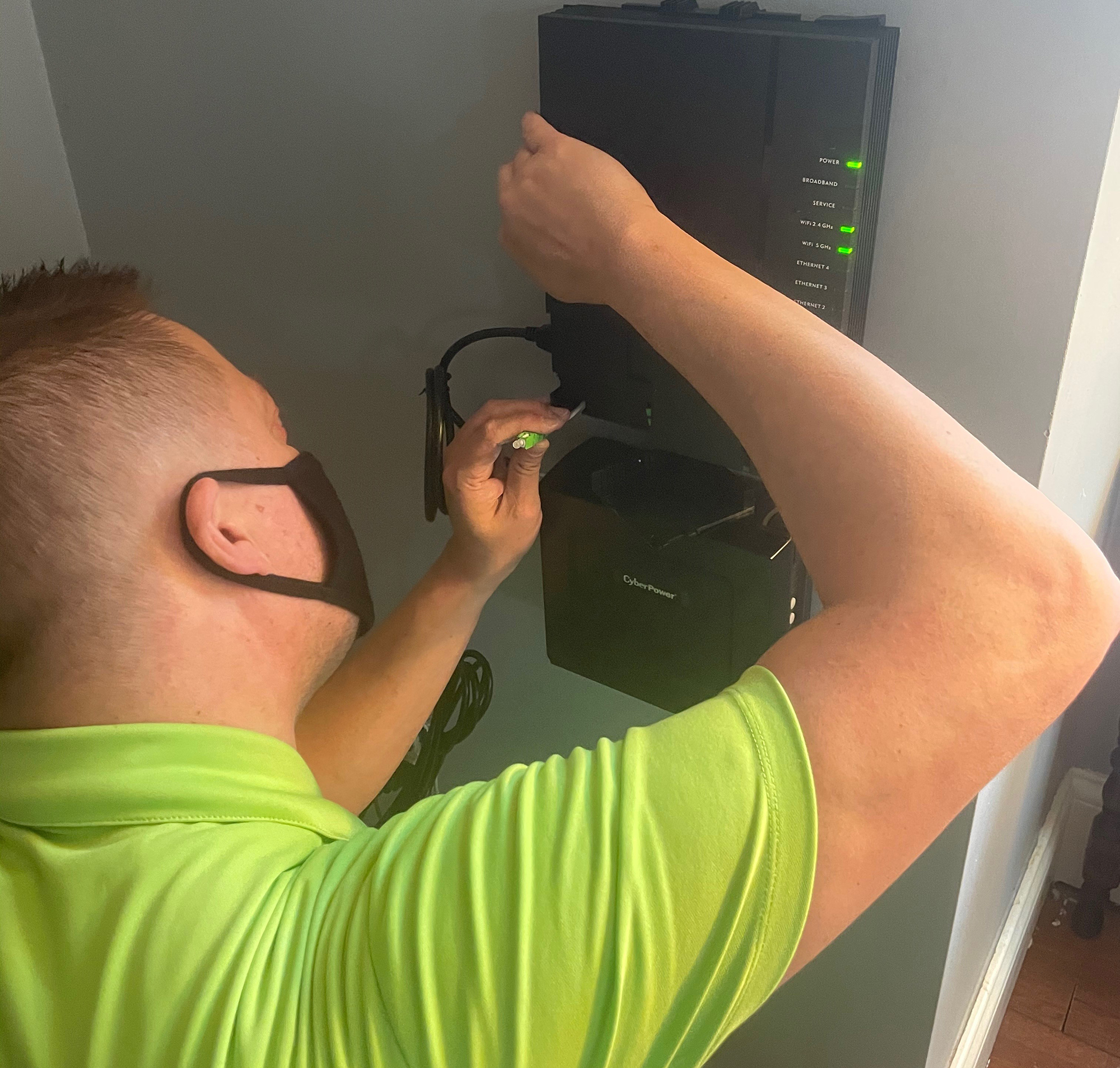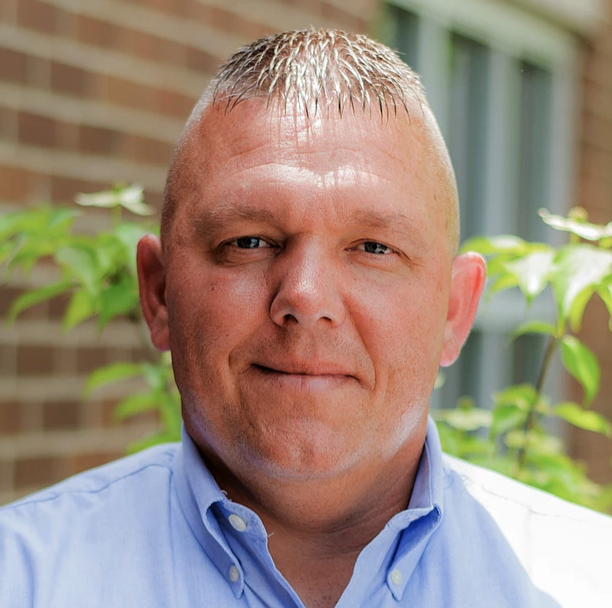By Miles Flynn | Southern Indiana Business Report
ORLEANS — It’s been almost a century since anyone had to argue that electricity is essential for living and working in rural areas. The Rural Electrification Act and the rural electric member cooperatives it spurred helped deliver that necessity long ago. Now, many of those same REMCs are working to connect residents to this generation’s essential tool for development: broadband access.
One early adopter that’s making the push in Southern Indiana is Orange County REMC through its subsidiary, Orange County Fiber.
“It isn’t a luxury anymore; it’s a need,” said Matt Deaton, the firm’s CEO and general manager.
The Orleans-based company is in the process of wrapping up final installs on its project to bring fiber internet access to all of its members who want it, under budget and well ahead of schedule. Now, the next steps — expansion outside of its existing electric service territory — are underway.
A board willing to learn
Deaton credits the REMC’s board for supporting the project from its earliest discussions back in 2016.
The concept wasn’t as familiar then, and there was no guarantee that broadband internet would be embraced by the board as something that fit the organization’s mission.
“The answer could’ve just as easily been ‘no,’” Deaton commented.
Instead, what followed was a year and a half of methodically looking at the idea from every possible angle. One big question is what would happen if the utility took on the project but then failed. Everyone at the table knew such an outcome could very well mark the end of their time as leaders of the utility.
After all the discussions, though, the decision ended up being unanimous.
“We decided this was what we wanted to do,” Deaton said. “That was the beginning of Orange County Fiber as we know it today.”
Financing the project
Construction on the $29 million project kicked off in October 2018, and the desire to keep work moving along as quickly as possible led to a bit of a change in financial partners for Orange County REMC. The firm had previously dealt with Rural Utilities Service for its long-term financing needs but also had lines of credit through National Rural Utilities Cooperative Finance Corporation.
The decision was made initially to pursue RUS financing, which requires continuing updates throughout the process, while utilizing CFC bridge funding to keep the work moving. However, Deaton said, it became clear a year into the project that the arrangement was causing delays.
Ultimately, there was a major shift that saw Orange County REMC move its existing electric debt to CFC.
“It was almost as big as the decision to do fiber in itself,” Deaton recalled.
While he stressed CFC “isn’t better or worse,” he said the move is what was required for the fiber project.
Fiber serving 3,600 households today
After a 200-mile “backbone” ring of fiber was put up around Orange County, the network was built out in phases. Fiber ultimately touched every corner of the cooperative’s territory, which serves the vast majority of rural Orange County, southern sections of Lawrence County, a slice of western Washington County, and small portions of Crawford and Martin counties. In all, the work required more than 1,000 miles of fiber optic cable.
Service to the first member began in March 2019, and now there are 3,669 households online.
“We’ve hooked up 3,600 folks in less than three years,” Deaton reported. “… That number is very close to the overall number we wanted to hook up in the four years of the project.”
In fact, the take rate is running approximately 25% ahead of where it was expected to be by this time, and the growing numbers should put the project over the hump of financial feasibility before the end of June.
“That’s the exciting part,” Deaton shared.
Lower costs passed on to customers
Total cost of the project is now expected to come in somewhere between $22 million and $23 million, which is more than 20% below the original estimate. The lower costs, federal and state grants, a 20-year tax abatement from Orange County, and a higher take rate than expected are all combining to help Orange County Fiber and its customers. One example is a simplified rate structure that’s slated to go into effect on Jan. 1, 2022. The current four-tiered system offers 50 megabits per second up and 50 Mbps down for $54.95 per month; 100/100 Mbps, $69.95; 250/250 Mbps, $99.95; and 1,000/1,000, $149.95. The change will see only two plans: 100/100 Mbps, $54.95; and 1,000/1,000, $99.95.
Deaton explained that existing customers on the 50/50 Mbps and 250/250 Mbps plans will see their speeds increase substantially while their bills remain the same. The 100/100 Mbps customers will experience a price drop, as will 1,000/1,000 Mbps users.
Expansion begins this summer
The success seen thus far in the project, the need for quality service elsewhere, and grant money secured by Orange County Fiber are resulting in the firm’s continued expansion.
Starting in the first quarter of 2022, the company will move into the northern parts of Dubois County, in the Dubois and Haysville areas. From there, Deaton said, decisions remain on the speed with which the project will extend across the northwestern part of Dubois County and north across all of the rural areas of Martin County and to Crane.
Portions of a $10.2 million federal Connect America Fund Phase II grant and a $5.9 million Rural Digital Opportunity Fund grant are in place to pay for work in both of those areas. While the terms of the grants give Orange County Fiber six years to complete work in each locale, Deaton said it’s in the company’s best interest to move as quickly as possible. The hope is to have both areas built out by mid-2024, and Deaton anticipates Orange County Fiber will serve 10,000 people in total there. (He also related that discussions are underway on possibly bringing service to Shoals and Loogootee.)
Closer to home, and starting right away, Orange County Fiber is self-funding work to bring its service from the countryside right into Paoli and Orleans.
“Between the two, we look to have the opportunity to serve 3,000 to 4,000 people,” Deaton noted.
Contracts have already been awarded. Work on the $1.7 million Orleans project should start by July 7, and the $1.5 million Paoli expansion is expected to begin by the end of July. Both undertakings should be done in a year. However, Deaton said, some customers in both communities are expected to be online by Christmas.
The work will move a little faster in Paoli, thanks to the town owning its electric system and giving permission to utilize its poles. In Orleans, rather than wait for permission from Duke Energy, Orange County Fiber is going underground.
Once all of those projects are complete, Orange County Fiber could see its overall number of customers grow to 15,000 in the next three to four years — a nearly fivefold increase from today. But the company isn’t done yet.
“There are so many people that remain without great service,” Deaton said.
He explained the firm will continue to consider new areas of expansion as long as it makes sense.
Commitment to quality
Deaton believes one reason Orange County Fiber’s product is so attractive to people is the firm’s commitment to quality service. All along, the model has been to deliver access to the internet just like the company delivers electricity. Service outages are investigated immediately, even if they happen in the middle of the night.
And, he said, customers like being able to call someone right here in Southern Indiana.
“That approach seems to be refreshing for folks,” he said.
Local economic impacts
In addition to the doors that fiber opens for economic activity in the region, the work has already had some major impacts locally.
Orange County REMC had 24 employees in 2015, Deaton said, and one or two more electric employees have been hired since then. However, Orange County Fiber has helped pushed overall employment up to 49. The growth was a factor in the decision to purchase another office/shop complex on the north end of Orleans earlier this year to supplement the firm’s existing space east of town, and an office is in the process of being opened in Jasper. The company’s workforce needs are constantly being evaluated, Deaton said, and he’s expecting to see employment grow to the mid-50s soon.
Deaton’s also pleased with how many local companies have been involved all along in the project and will be a part of the coming expansions, all thanks to their competitive bids. Orleans-based P&C Contracting has handled all of the drops from the main fiber to customer locations, and it will continue in that role with the planned next steps. Paoli-based ElectriCom will be stringing the fiber in the Paoli project area. (ElectriCom previously built three of the four phases of the original project.) Lineal Contracting of Bedford will perform those duties in Orleans. And all of the fiber strand itself is from Mitchell Industries of Mitchell.
A humbling experience
Deaton’s seen just what kind of difference fiber internet has meant for users, and he said they’ve shown so much enthusiasm and have been gracious in suffering through the growing pains inherent in a network that’s still under construction.
Work and school from home during the COVID-19 pandemic have only underscored the importance of high-speed internet access. Within the next 12 months, Deaton said, the households of 90% of the children of Orange County should have the opportunity to connect to fiber.
Beyond work and school, though, the availability of fiber has even been life changing in some cases. For example, Deaton said one rural resident told him she’d been able to visit her relatives from Germany — via video chat — for the first time in 30 years. It’s humbling, he said, to be involved with a project that’s making that kind of difference.
“Looking back now,” Deaton said of the board’s initial discussion five years ago, “we think we made a very wise decision.”




